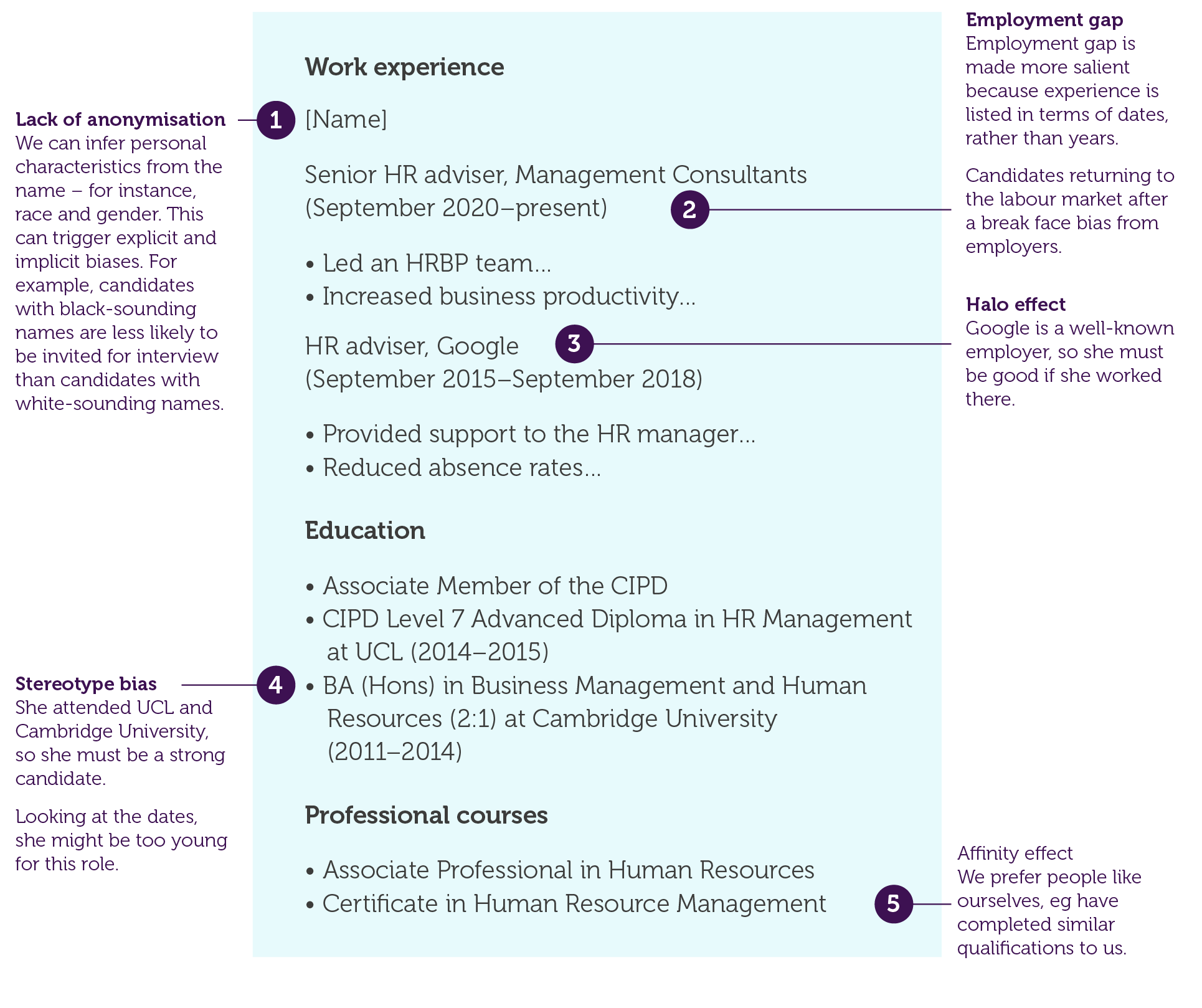Managers have a crucial role in supporting inclusive recruitment. Recruitment is about getting the most suitable candidate into a role, and it is critical for employers to deliver their goals, as well as for employees to find jobs that suit them. However, it is not always clear what makes a candidate ‘suitable’, and there is potential for bias to creep in when making these decisions.
Nobody is immune to unconscious bias. Even those of us who strive to make fair and objective decisions are affected by implicit biases, and increasing awareness of the biases that affect recruitment is unfortunately not enough to reduce their impact. Instead, recruitment processes should be redesigned to reduce the influence of bias.
This guide provides actionable steps to attract diverse candidates and ensure an unbiased and inclusive recruitment process. We provide recommendations for the four main stages of recruitment, including: role design and the job advert, attracting diverse candidates, the application process and how candidates are selected.
In larger organisations, some of the actions described may be the responsibility of HR, while in smaller organisations they may fall to the line manager. This guide covers all of the relevant actions so that managers are aware of the rationale behind these and can contribute to inclusive recruitment as relevant.
What is equality, diversity and inclusion (EDI)?
How can you make the role design and the job advert inclusive?
In designing the role and advertising it, managers should seek to provide knowledge, clarity and guidance by setting clear expectations, providing guidance where appropriate, and by understanding their own and employees’ roles.
How can you attract diverse candidates?
Building and sustaining relationships with employees begins with showing concern and consideration for candidates, particularly those from marginalised groups.
Selection Process
When it comes to selecting candidates, people managers have a critical role to play in ensuring they are being open, fair and consistent to the candidates in order to support getting the right person into the right role.
CIPD Trust
Tackling barriers to work today whilst creating inclusive workplaces of tomorrow.
Bullying
and harassment
Discover our practice guidance and recommendations to tackle bullying and harassment in the workplace.
Explore the CIPD’s point of view on religion and belief, including actions for Government and recommendations for employers
Explore the CIPD’s point of view on age diversity in the workplace, including recommendations for employers and actions for the UK Government
Explore the CIPD’s point of view on gender equality at work, including recommendations for employers and actions for the UK Government
This factsheet looks at recruiting overseas workers, the categories of non-UK nationals able to enter and work in the UK, and the legal framework involved.


What this practice is, why you should avoid it, and how to approach it if no other options are available

Practical guidance to help employers create a carer-friendly workplace

Maximise the benefits of flexible working, incorporating flexibility into people plans, strategy, and EVP
